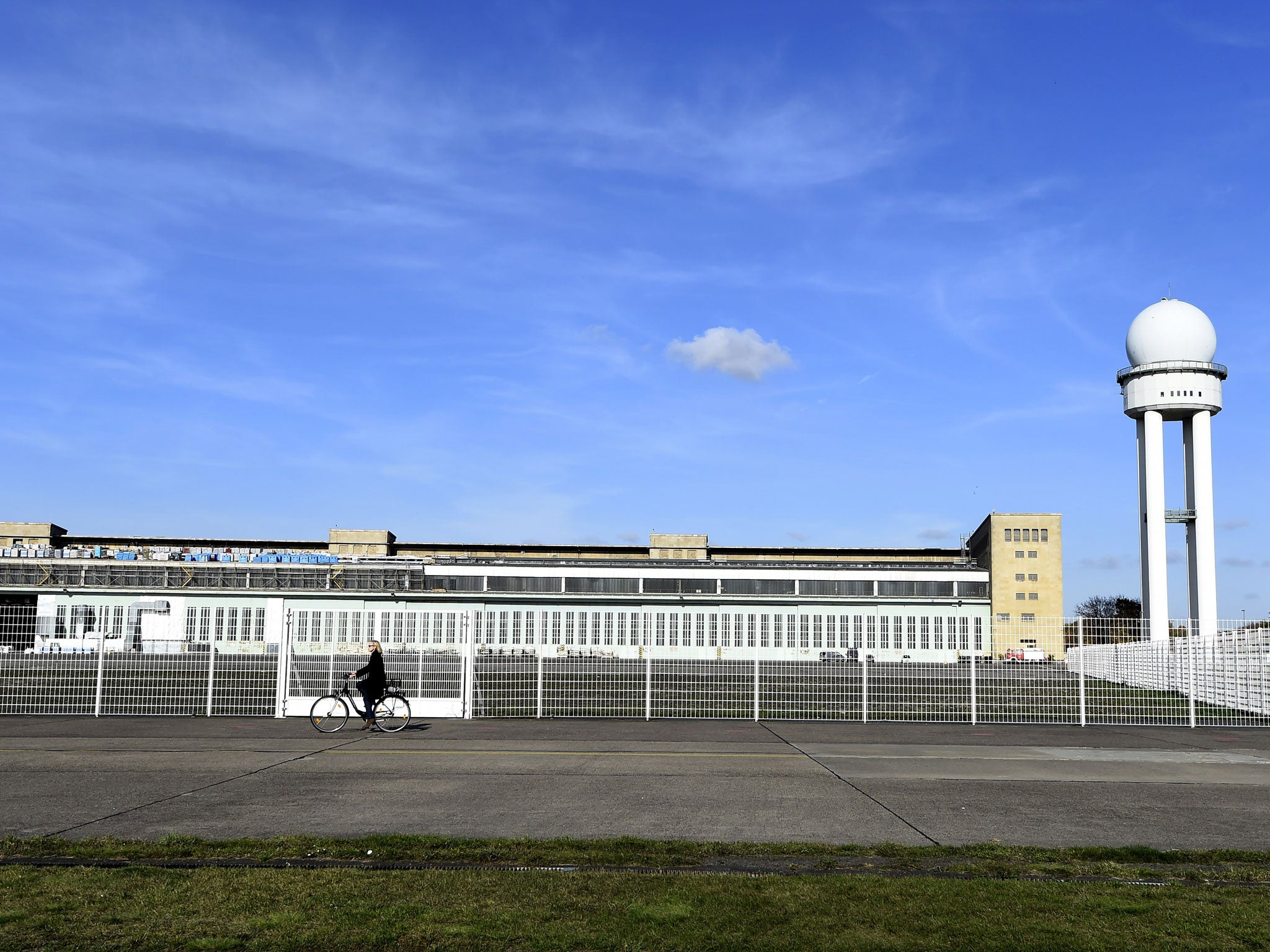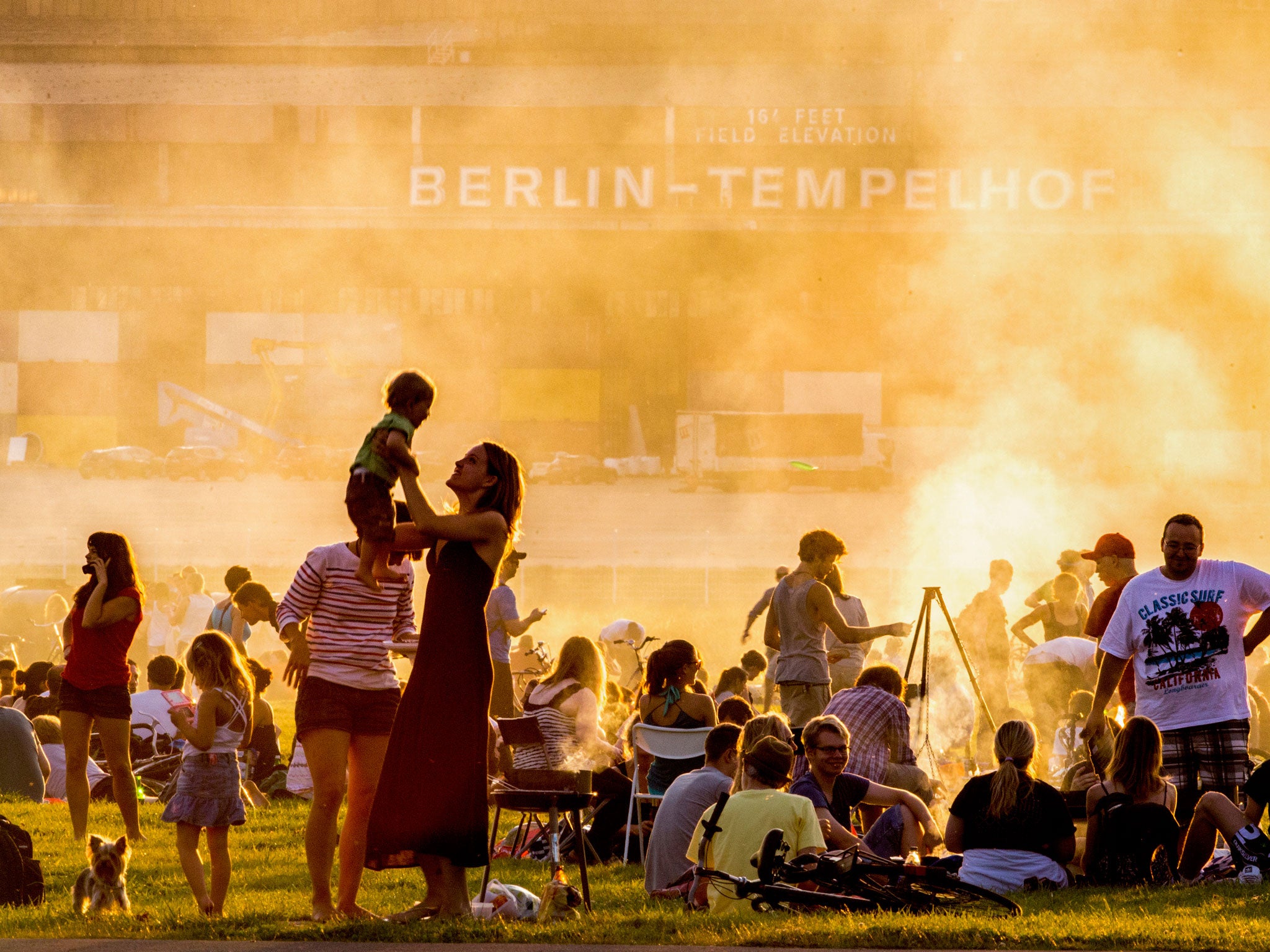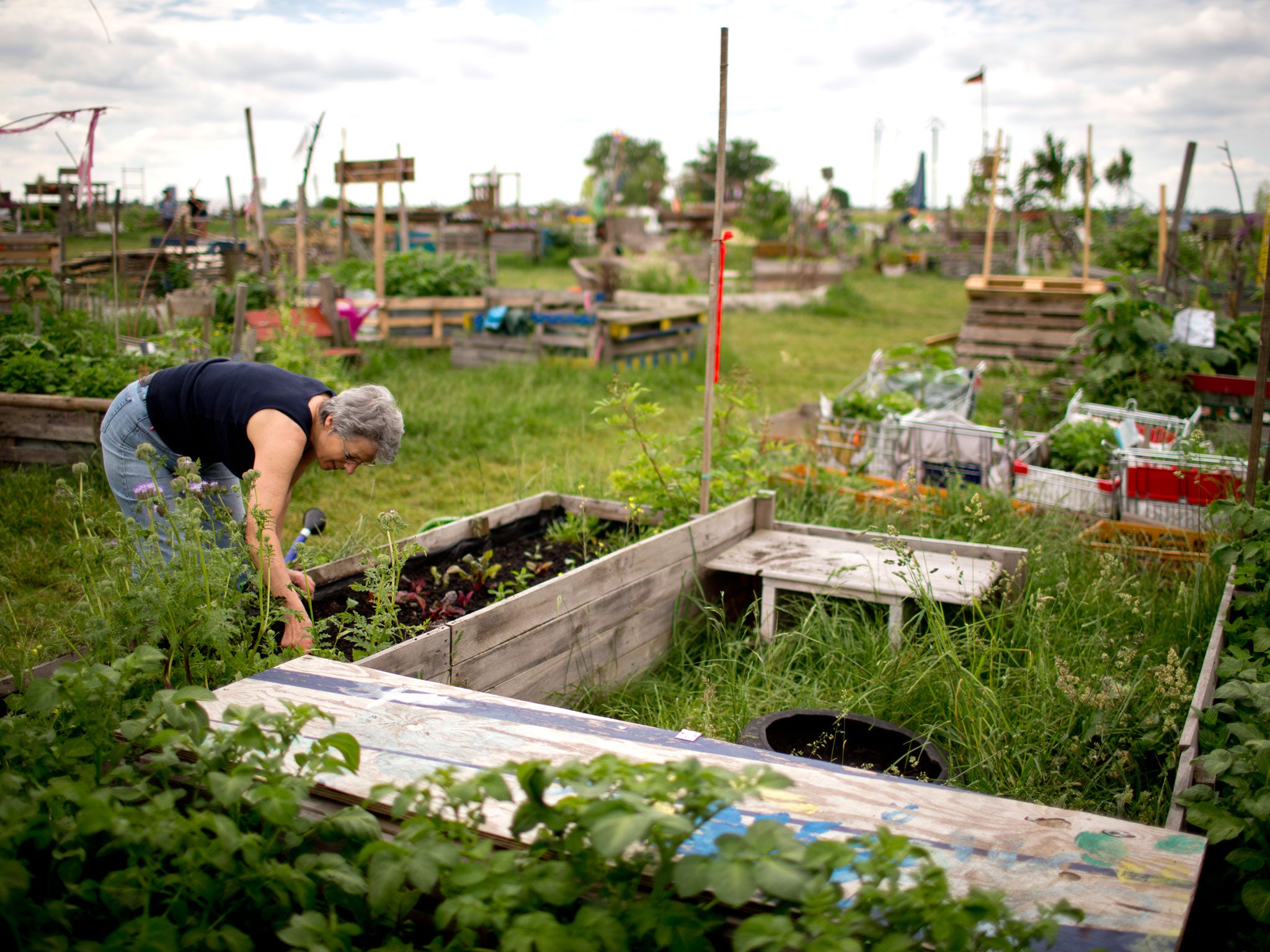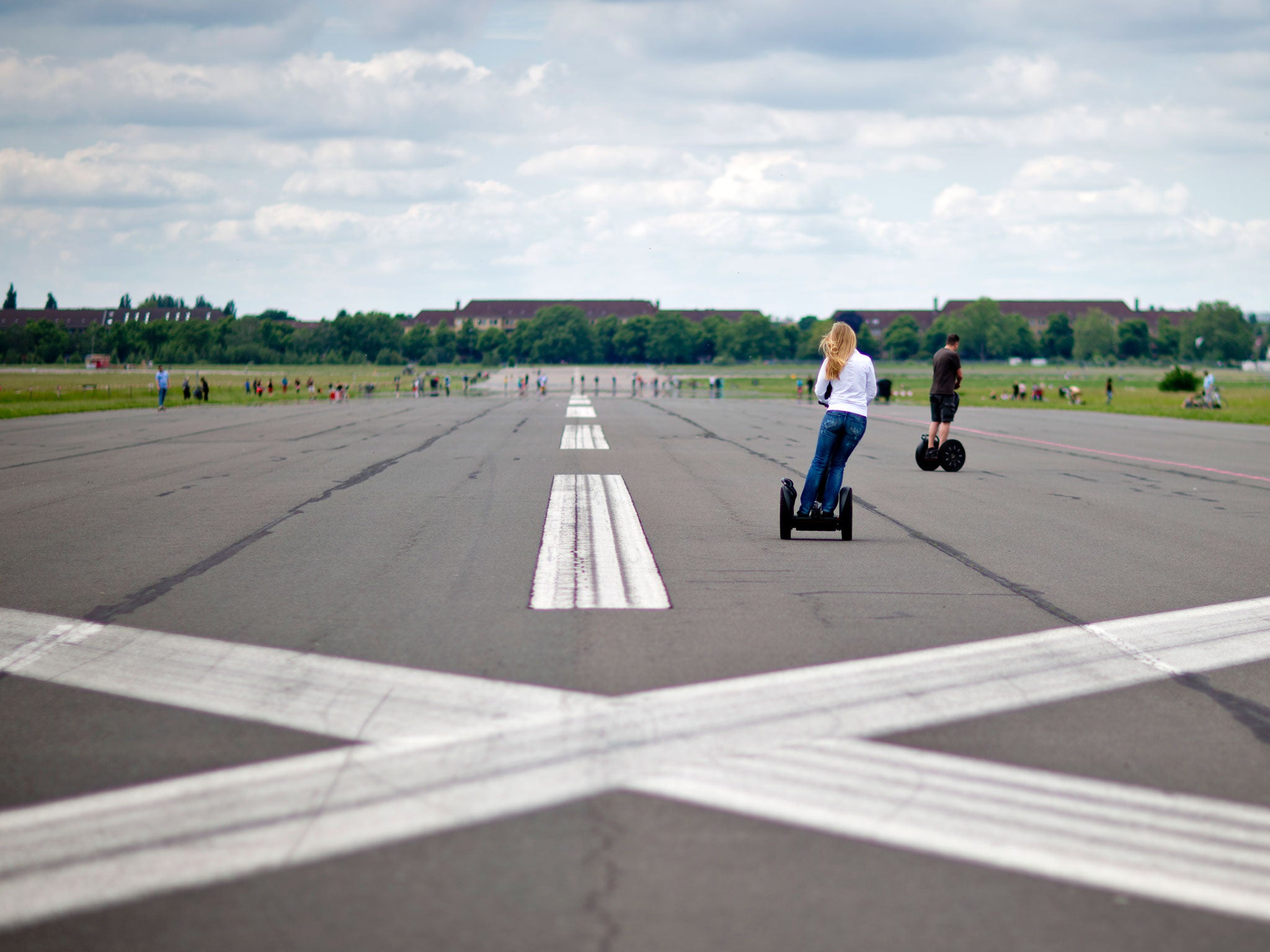Steeped in Cold War history, Berlin's Tempelhof is now a vast and eerily beautiful city park
Simon O'Hagan explores the former transport hub, which is now a civic amenity with a difference

Your support helps us to tell the story
From reproductive rights to climate change to Big Tech, The Independent is on the ground when the story is developing. Whether it's investigating the financials of Elon Musk's pro-Trump PAC or producing our latest documentary, 'The A Word', which shines a light on the American women fighting for reproductive rights, we know how important it is to parse out the facts from the messaging.
At such a critical moment in US history, we need reporters on the ground. Your donation allows us to keep sending journalists to speak to both sides of the story.
The Independent is trusted by Americans across the entire political spectrum. And unlike many other quality news outlets, we choose not to lock Americans out of our reporting and analysis with paywalls. We believe quality journalism should be available to everyone, paid for by those who can afford it.
Your support makes all the difference.There's a great movie called Twelve O'Clock High that depicts US aircrew life during the Second World War. It opens with the character played by Gregory Peck walking an abandoned aerodrome somewhere in southern England. The grass has grown long, the buildings are empty, the tarmac runways are crumbling. Eeriness permeates the scene. Memories come flooding back.
I thought of Twelve O'Clock High one late afternoon last November as dusk fell over over a city that more than most seems to lend itself to shadows. Winter, it struck me, is Berlin's natural season. No city is more redolent of the Cold War, and no Berlin location evokes that endlessly alluring period of history quite like Tempelhof Airport, the transport hub that until its closure in 2008 must have seen more spies pass through check-in than any other in the world.

Tempelhof lives on rather wonderfully. Its vast acreage is now given over to walkers, cyclists, and nature – a civic amenity with a difference. It's used for concerts and other events. People flock to it – to stroll, perhaps to fly a kite. Latterly its hangars have been used to provide accommodation for some of the many thousands of refugees who have been arriving in Germany from more strife-torn parts of the world.
The two airports that currently serve Berlin – Tegel and Schönefeld – lie to its north west and south east respectively – and one of the things that's striking about Tempelhof is how integrated into the city it is, pretty much comprising its own suburb only a few miles from the Brandenburg Gate. To incorporate it into a ride around town, such as my daughter and I did on our 10-euros-a-day rental bikes, is perfectly feasible.

Post-war geopolitics demanded that Tempelhof – the airport serving West Berlin – remained under the city's protection, and in turn it provided West Berliners with a lifeline. It was the focus of the Berlin Airlift – the 1948 emergency when, with the Soviet Union blockading the city, the only way that fresh food and other essentials could reach the populace was for them to be flown in.
Nearly 70 years later, in a different epoch, Tempelhof has an atmosphere that anyone who grew up on John le Carré, or has even just seen Bridge of Spies, would not want to miss. "Ghostly" doesn't do justice to the sight we came across of a decaying, 1950s-era passenger jet expired on the grass alongside one of the runways, with only a wire-mesh fence to stop the visitor strolling right up to it and peering inside. I would have also liked to be able to get closer to the terminal building – a sleek, curving, low-rise marvel of pre-war architecture, said to have once been the largest building in the world.

Nearby, a group of young Berliners played a desultory game of rugby, a reminder that Tempelhof is still more park than museum – but a park where any such activity has a touch of the transgressive about it. Disused railway lines reconfigured as cycle paths is one thing. But disused international airport runways is quite another. There are no more opportunities to take a pickaxe to the Berlin Wall, but for locals seeking a reminder of that feeling of both liberation and togetherness, a visit to Tempelhof might seem to provide it.
Join our commenting forum
Join thought-provoking conversations, follow other Independent readers and see their replies
Comments